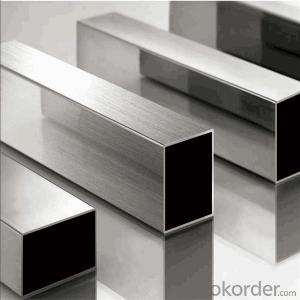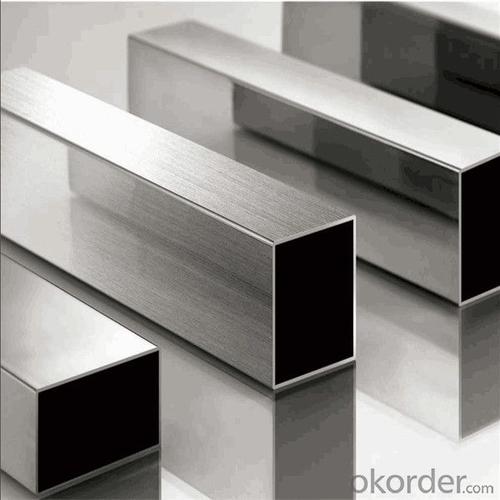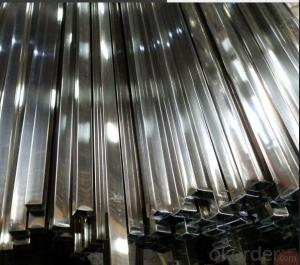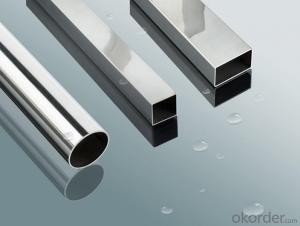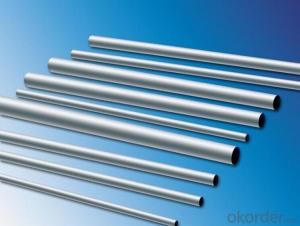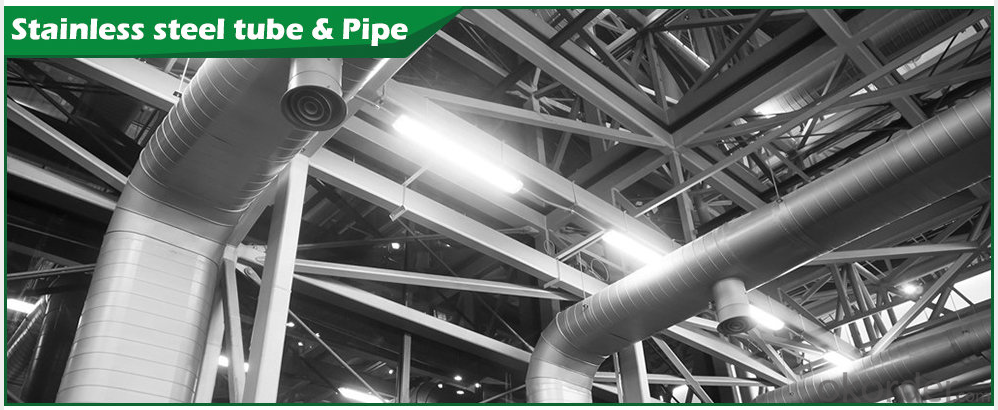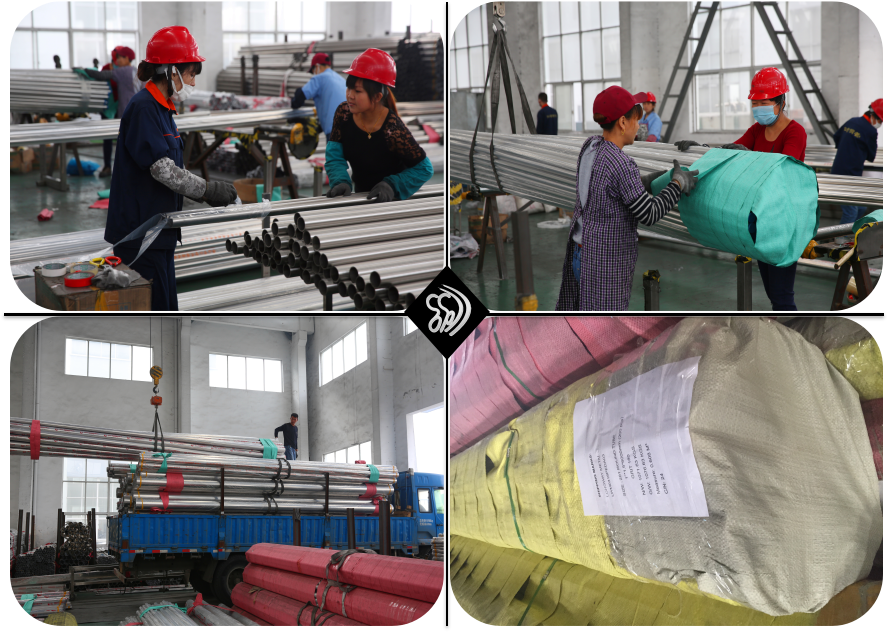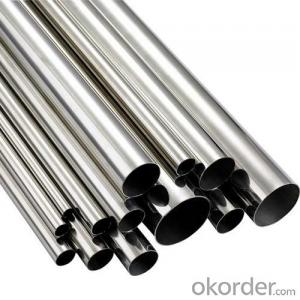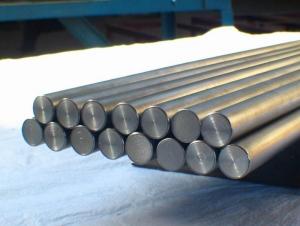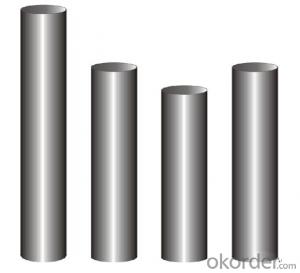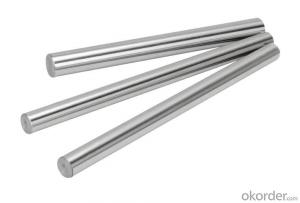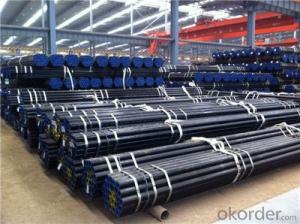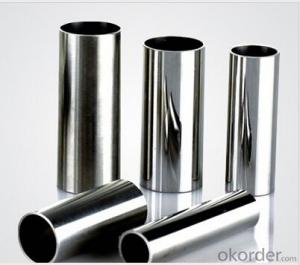304 316L Stainless Steel Pipe Price (ISO Certified factory direct price )
- Loading Port:
- Shanghai
- Payment Terms:
- TT OR LC
- Min Order Qty:
- 2 m.t.
- Supply Capability:
- 25000 m.t./month
OKorder Service Pledge
OKorder Financial Service
You Might Also Like
Specification
316 stainless steel pipe
Name | Stainless Steel Seamless & Welded Tube &Pipe | |||||
Items | Square tubes, round tubes, oval pipes, special shaped pipes, empaistic pipes, fittings | |||||
Standard | ASTM A554, A249, A269 and A270 | |||||
Material Grade | 201: Ni 0.8%~1% | |||||
202: Ni 3.5%~4.5% | ||||||
304: Ni 8%, Cr 18% | ||||||
316: Ni 10%, Cr 18% | ||||||
316L: Ni10%~14% | ||||||
430: Cr16%~18% | ||||||
Outer Diameter | 9.53mm--159mm | |||||
Thickness | 0.3mm - 3.0mm | |||||
Length | 6m or as customers' request | |||||
Tolerance | a) Outer Diameter: +/- 0.2mm | |||||
b) Thickness: +/- 0.02mm | ||||||
c) Length: +/- 5mm | ||||||
Surface | 180G, 240G, 320G Satin / Hairline 400G, 600G Mirror finish | |||||
Application | handrail,railing, staircase, weldmesh screen,door,window, balcony,fence,bench,furniture,etc | |||||
Test | Squash test, extended test, water pressure test, crystal rot test, heat treatment, NDT | |||||
Chemical Composition of Material | Material
Composition | 201 | 202 | 304 | 316L | 430 |
C | ≤0.15 | ≤0.15 | ≤0.08 | ≤0.035 | ≤0.12 | |
Si | ≤1.00 | ≤1.00 | ≤1.00 | ≤1.00 | ≤1.00 | |
Mn | 5.5-7.5 | 7.5-10 | ≤2.00 | ≤2.00 | ≤1.00 | |
P | ≤0.06 | ≤0.06 | ≤0.045 | ≤0.045 | ≤0.040 | |
S | ≤0.03 | ≤0.03 | ≤0.030 | ≤0.030 | ≤0.030 | |
Cr | 13-15 | 14-17 | 18-20 | 16-18 | 16-18 | |
Ni | 0.7-1.1 | 3.5-4.5 | 8-10.5 | 10-14 | ||
Mo | 2.0-3.0 | |||||
Mechanical Property | Material Item | 201 | 202 | 304 | 316 | |
Tensile Strength | ≥535 | ≥520 | ≥520 | ≥520 | ||
Yield Strength | ≥245 | ≥205 | ≥205 | ≥205 | ||
Extension | ≥30% | ≥30% | ≥35% | ≥35% | ||
Hardness (HV) | <105 | <100 | <90 | <90 | ||
Definition of stainless steel(Adopted form Wikipedia)
In metallurgy, stainless steel, also known as inox steel or inox from French "inoxydable",
is defined as a steelalloy with a minimum of 10.5% to 11% chromium content by mass.
Stainless steel does not readily corrode, rust or stain with water as ordinary steel does,
but despite the name it is not fully stain-proof, most notably under low oxygen, high salinity,
or poor circulation environments. It is also called corrosion-resistant steel or CRES
when the alloy type and grade are not detailed, particularly in the aviation industry.
There are different grades and surface finishes of stainless steel to suit the environment
the alloy must endure. Stainless steel is used where both the properties of steel
and resistance to corrosion are required.
Surface Finish :
Surface finish | Characteristics and application |
No.2B | The surface brightness and flatness of no2B is better than no2D. then through a special surface treatment to improve its mechanical properties, No2B could nearly satisfy comprehensive uses. |
No.3 | Polished with abrasive belt of git#100-#200, have better brightness with discontinuous coarse stria, used as inner and external ornaments for building, electrical appliances and kitchen utensils etc. |
No.4 | Polished with abrasive belt of grit #150-#180,have better brightness with discontinuous coarse stria, but thinner than No3, are used as bathtub buildings inner and external ornaments electrical appliances kitchen utensils and food processing equipment etc. |
HL | Polished with abrasive belt of grit #150-#320 on the NO.4 finish and has continuous streaks, mainly used as buildings ornaments elevators, door of building, frontal plate etc. |
BA | Cold rolled, bright annealed and skin-passed, the product have excellent brightness and good reflexivity like mirror, kitchen apparatus, ornament etc. |
8K | The product have excellent brightness and prefer reflexivity can to be the mirror. |
Mechanical Properties: MaterialY.S(N/MM2)T.S(N/MM2)ElongationHRB304>205>520>40<95304l>175>480>40<90316>205>520>40<90316l>175>480>40<90430>205>450>22<89
Applications: SurfaceApplication2BMedical equipment, Food industry, Construction material, Kitchen utensils.BAKitchen utensils, Electric equipment, Building construction.No.1Chemical tank, pipe.No.4Kitchen utensils, Building construction,Medical equipment.HLBuilding Construction.
|
| ---Packing & Transport--- Packing
Transport
|
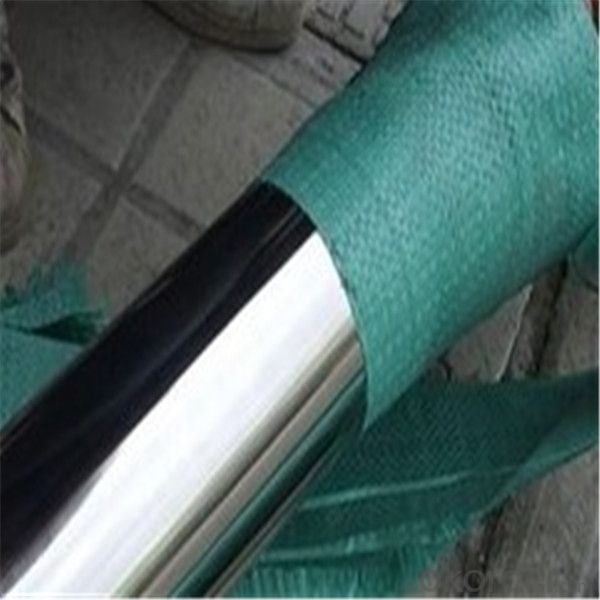
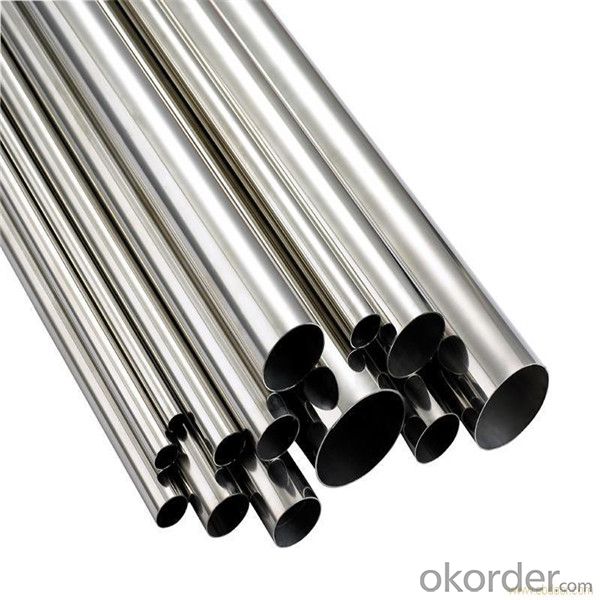
- Q: Can stainless steel pipes be used in the aerospace industry?
- Certainly! Stainless steel pipes have a wide range of applications in the aerospace industry due to their versatility and durability. With exceptional resistance to corrosion, high temperatures, and pressure, stainless steel is an ideal material for various aerospace systems like fuel, hydraulic, and air conditioning systems. Moreover, stainless steel pipes are commonly utilized in aircraft engines, ensuring optimal performance under extreme temperatures. Furthermore, their lightweight nature makes them particularly suitable for aerospace applications where weight reduction is crucial. In conclusion, stainless steel pipes not only meet the rigorous requirements and standards of the aerospace industry but are also extensively employed in various aircraft and spacecraft components.
- Q: Are stainless steel pipes suitable for water desalination plants?
- Indeed, water desalination plants find stainless steel pipes to be a suitable choice. This is because stainless steel possesses exceptional qualities such as resistance to corrosion, durability, and hygienic properties. These pipes display remarkable resistance against rust, corrosion, and scaling, guaranteeing a lengthy lifespan and minimal maintenance requirements. Furthermore, stainless steel pipes do not release any harmful substances into the water, ensuring their safety for use in desalination plants. Their robustness and ability to withstand high pressure also make them well-suited for handling the elevated pressure environments frequently encountered in water desalination processes. On the whole, stainless steel pipes offer a dependable and effective means of water transportation in desalination plants, thereby contributing to the generation of clean and safe drinking water.
- Q: Are stainless steel pipes suitable for power generation plants?
- Yes, stainless steel pipes are suitable for power generation plants. Stainless steel is known for its excellent corrosion resistance, which makes it ideal for use in power generation plants that involve high temperatures, pressure, and corrosive environments. Power generation plants often use various types of fluids, such as steam, water, and chemicals, which can cause corrosion and degradation of the piping system. Stainless steel pipes can withstand these harsh conditions and provide long-lasting performance. Furthermore, stainless steel pipes have high strength and durability, which is crucial for power generation plants that operate at high pressures. They can handle the stress and strain of the system without the risk of failure or leakage. In addition, stainless steel is also resistant to scaling and fouling, which is important for maintaining the efficiency of the power plant. The smooth internal surface of stainless steel pipes helps to minimize friction and pressure losses, ensuring efficient flow of fluids. Moreover, stainless steel pipes are easy to maintain and clean. They do not require frequent inspections or repairs, reducing downtime and maintenance costs for power generation plants. Overall, the superior corrosion resistance, strength, durability, and efficiency of stainless steel pipes make them highly suitable for power generation plants. They offer a reliable and long-lasting solution for fluid conveyance in such demanding environments.
- Q: How long do stainless steel pipes last?
- Stainless steel pipes have an impressive lifespan and can last for several decades, depending on various factors such as the quality of the steel, installation techniques, and maintenance practices. In general, with proper care and maintenance, stainless steel pipes can last 50 years or more.
- Q: Can stainless steel pipes be used for steam applications?
- Yes, stainless steel pipes can be used for steam applications. Stainless steel is known for its high temperature resistance and corrosion resistance, making it suitable for steam systems. It can withstand the high pressure and temperatures that steam applications require without deforming or corroding. Stainless steel pipes are also durable and have a long lifespan, making them a reliable choice for steam applications. Additionally, stainless steel pipes can be easily welded, ensuring a secure and leak-free steam system.
- Q: What is the difference between 310 and 316 stainless steel pipes?
- The chemical composition and intended uses distinguish 310 and 316 stainless steel pipes. 310 stainless steel, with its higher chromium and nickel content, is an alloy highly resistant to oxidation and corrosion in high-temperature settings. It finds suitability in applications like furnace parts, heat exchangers, and other high-temperature industrial processes. In contrast, 316 stainless steel is a more versatile and widely used alloy due to its exceptional corrosion resistance. It contains a higher proportion of molybdenum, enhancing its resistance to pitting and crevice corrosion, particularly in chloride environments. This makes it suitable for applications in marine environments, chemical processing, and food processing industries. To summarize, while both 310 and 316 stainless steel pipes offer corrosion resistance, 310 stainless steel is specifically engineered for high-temperature applications, whereas 316 stainless steel is commonly employed for general corrosion resistance across diverse industries.
- Q: Can stainless steel pipes be used for underground installations?
- Yes, stainless steel pipes can be used for underground installations. Stainless steel is known for its excellent corrosion resistance, which makes it suitable for underground environments where moisture and chemicals are present. It is also highly durable and can withstand harsh conditions, making it a reliable choice for underground installations. Additionally, stainless steel pipes offer high strength and are resistant to cracking or damage, ensuring the longevity of the installation. Overall, stainless steel pipes are a popular choice for underground applications due to their corrosion resistance, durability, and strength.
- Q: What is the difference between ERW and EFW stainless steel pipes?
- ERW (Electric Resistance Welded) and EFW (Electric Fusion Welded) are two different methods used for manufacturing stainless steel pipes. The main difference between the two lies in the welding process. ERW stainless steel pipes are manufactured by rolling a flat sheet of steel into a cylindrical shape and then welding the edges together using a high-frequency electrical current. This process creates a strong, seamless joint between the two edges of the sheet, resulting in a pipe that is highly resistant to corrosion and has a smooth interior surface. ERW pipes are commonly used in applications where strength and durability are required, such as in the oil and gas industry. On the other hand, EFW stainless steel pipes are made by applying a combination of heat and pressure to melt the edges of two pieces of steel and then welding them together. This fusion welding process results in a pipe that has a continuous weld along its entire length, eliminating the need for any additional welding. EFW pipes are known for their excellent corrosion resistance and are often used in applications where high-pressure and high-temperature conditions are present, such as in chemical plants and power generation facilities. In summary, the main difference between ERW and EFW stainless steel pipes lies in the welding process. ERW pipes are made by welding the edges of a flat sheet, while EFW pipes are made by fusing the edges of two pieces of steel. Both methods have their respective advantages and are used in different applications depending on the specific requirements of the project.
- Q: Can stainless steel pipes be insulated with rubber?
- Indeed, rubber insulation can be applied to stainless steel pipes. Employing rubber insulation is a prevalent technique for safeguarding and insulating diverse pipe varieties, encompassing stainless steel pipelines. With rubber insulation, numerous advantages manifest, such as thwarting heat loss or gain, minimizing condensation, and furnishing soundproofing attributes. Moreover, it demonstrates resistance against moisture, chemicals, and UV rays, thereby rendering it suitable for employment in both indoor and outdoor settings. Furthermore, rubber insulation installation and maintenance pose no challenge, thereby rendering it a cost-efficient selection for insulating stainless steel pipes.
- Q: What is the working temperature range for stainless steel pipes?
- The working temperature range for stainless steel pipes depends on the specific grade of stainless steel being used. Generally, stainless steel pipes can withstand a wide range of temperatures, from extremely low temperatures to high temperatures. For austenitic stainless steel grades, which are the most commonly used in pipe applications, the working temperature range is typically from -196°C (-320°F) to 816°C (1500°F). These grades, such as 304 and 316, exhibit excellent heat resistance and can maintain their strength and corrosion resistance even at elevated temperatures. However, it is important to note that the working temperature range can vary depending on the specific alloy composition and the application requirements. Some specialized stainless steel grades, such as duplex or super duplex stainless steels, may have different temperature limits due to their unique characteristics. It is always recommended to consult the manufacturer's specifications and guidelines to determine the specific working temperature range for a particular grade of stainless steel pipe. Additionally, considering factors such as pressure, corrosive environment, and thermal cycling should also be taken into account when determining the appropriate working temperature range for stainless steel pipes.
Send your message to us
304 316L Stainless Steel Pipe Price (ISO Certified factory direct price )
- Loading Port:
- Shanghai
- Payment Terms:
- TT OR LC
- Min Order Qty:
- 2 m.t.
- Supply Capability:
- 25000 m.t./month
OKorder Service Pledge
OKorder Financial Service
Similar products
Hot products
Hot Searches
Related keywords
